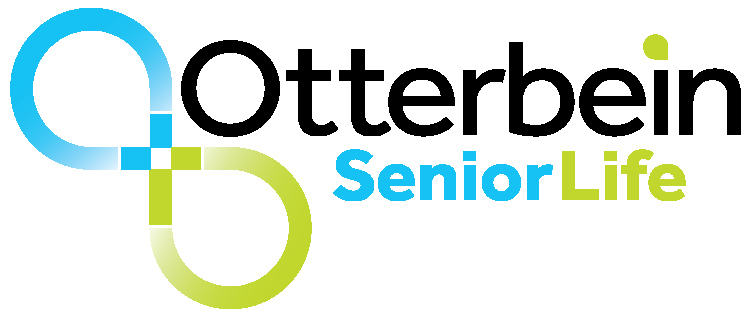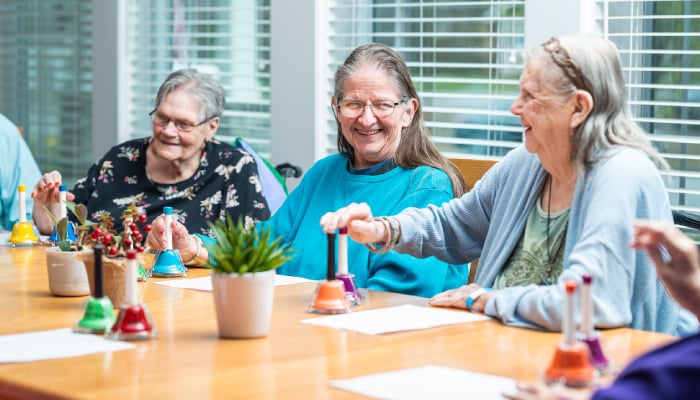If you’re currently looking for long-term or post-acute care for yourself or a loved one, you may want to consider a less traditional form of nursing home care. Green House homes, built in partnership with The Green House Project®, are transforming the institutional approach to senior care.
What is The Green House Project?
Since its beginnings in 2003, The Green House Project has been challenging the traditional model of nursing home care. Much different from other settings, Green House homes are small, self-contained houses where elders have private rooms and bathrooms with shared living and outdoor spaces.
Most Green House homes are licensed skilled nursing facilities that also offer post-acute rehabilitation and memory care. A dedicated team of care partners (staff) uses a person-centered focus where choice and independence are encouraged. Elders decide when to wake up, what to eat, and how they will spend each day.
The Green House Project, a not-for-profit organization, partners with organizations, advocates, and communities in leading the transition from institutional long-term and post-acute care to a meaningful, comforting, and satisfying home-like environment. The first Green House homes opened in Tupelo, Mississippi, in 2003, and now there are nearly 400 homes across the United States.
Related: “They’re So Good to Me”: Otterbein Small House Neighborhood Elder Tells Her Story >>
How Is the Green House Model Improving Care?
Research has shown that the Green House model is improving the quality of life and care for older adults. Here are ways Green House elders, compared to seniors residing in a traditional nursing home, are benefiting from this redesign of care:
- Improved quality of life. Green House elders report improvements in privacy, dignity, meaningful activities, relationships, autonomy, food enjoyment, and individuality — all seven domains of quality of life and emotional well-being.
- Improved quality of care. Green House elders manage their activities of daily living longer and experience less depression and decline.
- Improved family satisfaction. Families report being more satisfied with the meals, amenities, housekeeping, privacy, autonomy, health care, and physical environment for their loved ones.
- Higher direct care time. Green House homes report an increase in staff time, approximately 23-31 minutes more each day, spent with each resident for direct care activities.
- Improved staff satisfaction. The staff at Green House homes report higher job satisfaction, less stress, and less turnover than in traditional nursing settings.
- Increased engagement with staff. Elders in Green House homes enjoy four times the amount of time engaging with staff outside of direct care.
- Timely intervention. Due to the high level of familiarity with the elders, partners are able to detect health changes in elders sooner, facilitating timely intervention.
.jpg?width=1280&name=Otterbein_Gahanna_2022-59%20(1).jpg)
What Are Otterbein SeniorLife Neighborhoods?
Otterbein SeniorLife Neighborhoods, located in nine residential areas across central and western Ohio, are designed and built using the Green House model. Each of our neighborhoods has five one-story homes with 12 private suites in each house. Elders receive skilled nursing, rehabilitation, or long-term care — including memory care — in a home-like environment.
Family-style meals are prepared in an open kitchen where elders provide input for menu planning and meal preparation. Elders have access to physical, occupational, and speech therapy in their small houses. There’s no need to drive to another location for services as everything you need is right there.
Related: Otterbein SeniorLife Neighborhoods: What’s Inside a Small House? >>
.jpg?width=1280&name=Otterbein42722Monclova%20-%20046%20(1).jpg)
How Is The Green House Project Partnership Beneficial to Otterbein SeniorLife?
Together, Otterbein SeniorLife and The Green House Project can share best practices and participate in research and ongoing innovation toward this revolutionary shift in senior care.
Membership with The Green House Project includes support for the small home care model through public policy initiatives at the state and federal levels. The partnership also provides access to a peer network website, educational opportunities, webinars, and newsletters.
Related: Otterbein SeniorLife Announces Membership in The Green House Project >>
Is a Small House Neighborhood a Good Fit for Your Loved One?
To learn more about Otterbein SeniorLife Neighborhoods, visit our webpage to view photos, floor plans, amenities, and more. You’ll also be able to find a location near you!



